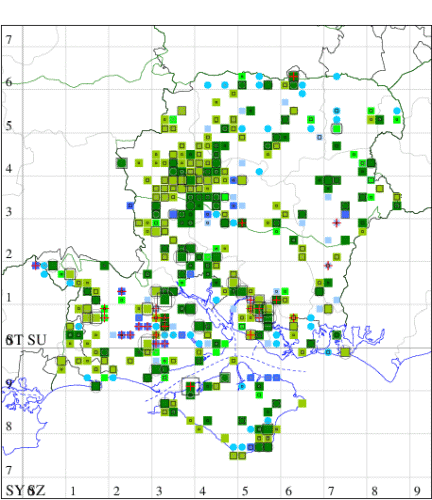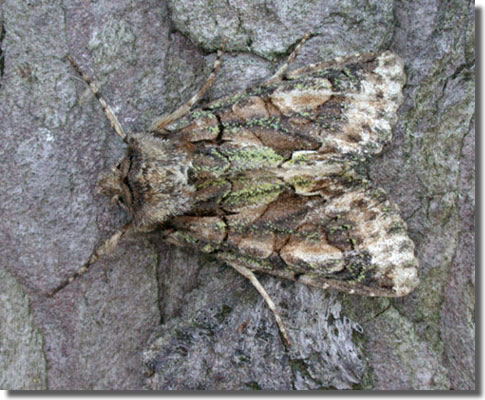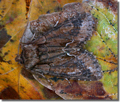Green-brindled Crescent
Allophyes oxyacanthae
Checklist Number73.068 [B&F: 2245]
Verification
Record will be accepted (subject to date and location checks)
Classification
| Family: | Noctuidae |
| Subfamily: | Psaphidinae |
| Genus: | Allophyes |
| Species: | oxyacanthae |
| Authority: | (Linnaeus, 1758) |
Common in broad-leaved woodland, scrub, hedgerows and gardens throughout the British Isles, a species of conservation concern under the UK Biodiversity Action Plan. In Hampshire and on the Isle of Wight widely distributed, but not particularly common. Wingspan 38-48 mm. Occurs in two forms, and their intermediates, in any shade on a scale from green to brown, but always easy to recognise and unlike any other British moth. Larva feeds on Hawthorn and Blackthorn and, less frequently, other broad-leaved trees and shrubs.


The abundance in each month is indicated as follows:
 No records
No records Very occasional
Very occasional Irregular
Irregular Uncommon
Uncommon Off-peak, but not unusual
Off-peak, but not unusual Off-peak, but not unusual
Off-peak, but not unusual Main flight time
Main flight time| J | F | M | A | M | J | J | A | S | O | N | D | |
|---|---|---|---|---|---|---|---|---|---|---|---|---|
| Adult |  |  |  |  |  |  |  |  |  |  |  |  |
| Larval |  |  |  |  |  |  |  |  |  |  |  |  |





